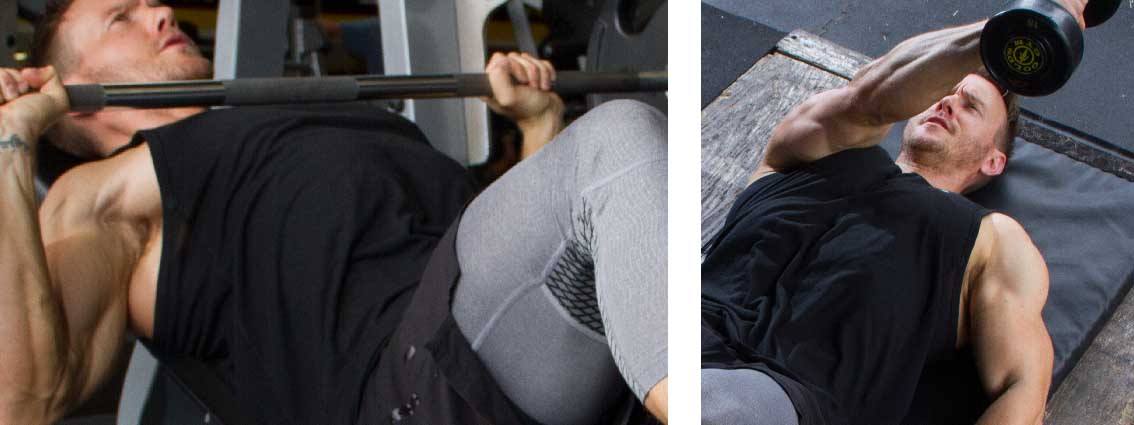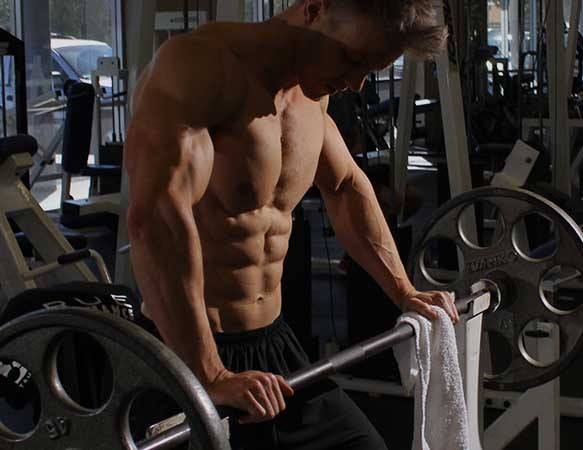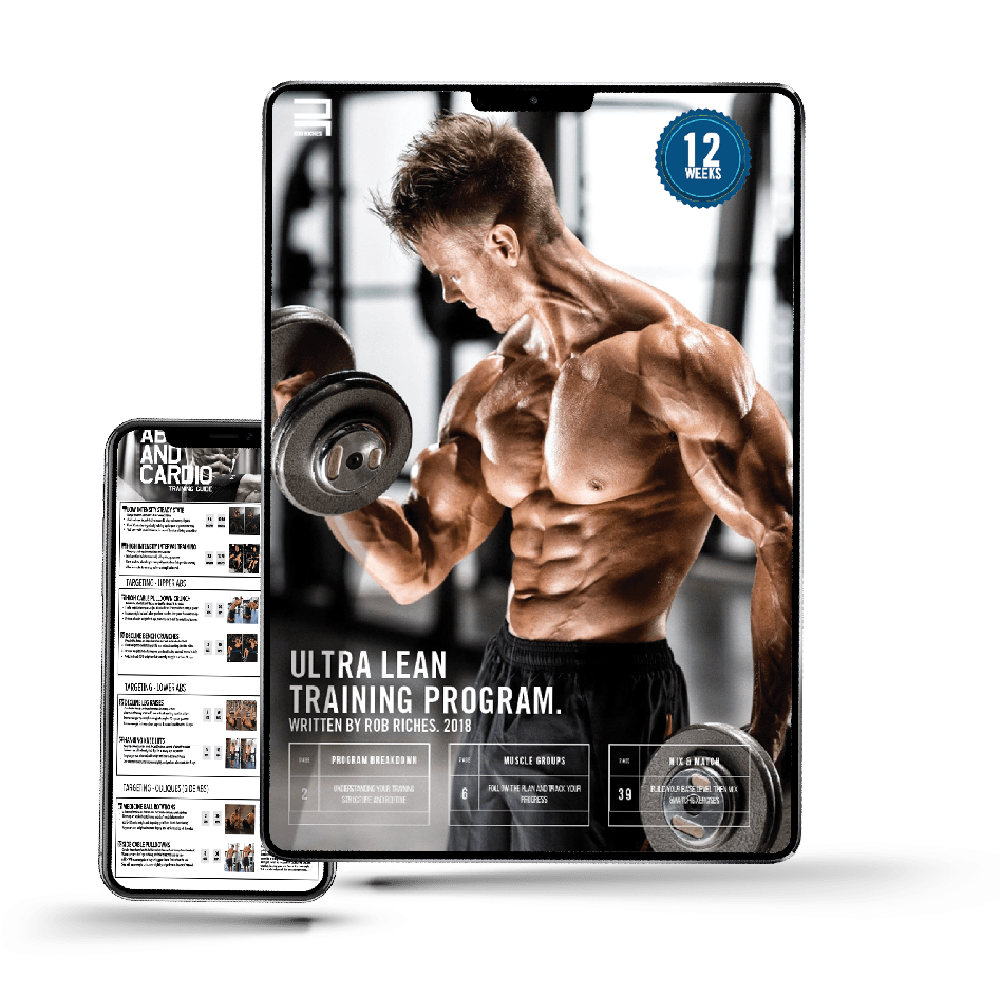Five must-try techniques if you want greater definition in your chest!
June 15, 2018
There’s only so many movements that the chest can go through, but there’s literally an unlimited number of different methods that can be employed across the same base routine. That is what this post is centered around.
I think of my workouts like I do my nutrition, in the sense that I’ve got my basic building blocks (exercises/ingredients), which I’ll always use and more or less use them week after week, but have numerous ways in which I can switch up the style and flavor. It’s easy to ensure that no two workouts are exactly the same, even without changing any of the exercises.

← Have You Seen This?
In need of an extra boost to your training? Check out my Ultra Lean Nutrition Manual, and Ultra Lean Training Program
Angles, Heights, & Range Of Motion
Think about how your body works and how you move your muscles. You’re not limited to a specific way of moving, but free to move in many different ways. I look at my workouts in much the same way: There’s the most common way of performing a movement, and then there’s multiple variations, each one changing how the muscles are worked. Even if only by a tiny fraction, think about how these changes can build up to something big over time.
Let’s take a chest press as an example. Within any given set, I can vary the angle of the bench (even by propping the back of the bend up on a plate, and keeping the bench itself flat can make a difference in how you feel the chest work when pressing the weight up). What I mean by height is where you might lower the weight relatively to the standard position (which in the example of a bench press would be more or less then central sternum, or nipple-line), and by lowering the bar a fraction higher than this point, can also give you a different feeling in the muscles worked. As for range of motion, not every set has to include taking the muscles through their full range of motion. You can try performing a half rep followed by a full rep, followed by a half rep again.
You see, there are multiple ways you can continue to keep your workouts varied. My usual approach is to max out with the heaviest weight I can manage using near-perfect form for the desired number of reps (notice I say near perfect, and not absolute perfect), and then in the following set(s) left, I’ll decrease the weight and change one or two factors as mentioned above, and stress the muscles in a slightly different way.
Shocking Principles
Shocking principles refer to the methods used during your actual lifting of the weight. Regardless whether you’ve changed the angle, height, or range-of-motion of the exercise, this is about what you do once you’ve reached the point at which you can no longer lift the weight. This is where you have an armory of techniques to make use of that will continue to push you and shock the muscles.
I’m a big fan of taking the muscles to failure using straight sets, and using as much weight as I can manage, but it’s after that where I’ll start to incorporate one or two shocking principles, and it doesn’t have to be on every exercise, or even every workout.
Once you’ve hit your peak muscular threshold, you’ve done your job. Taken it back to that level will only result in diminished returns. This is the time when you can make use of any number of methods, including drop-sets, strip-sets, rest-pause, assisted reps, slow negatives, and super-sets, to name but a few. (You can find more of these techniques within my free training guide here).

Feel The Muscles Really Work
Showing definition within the muscles isn’t necessarily about using lighter weight and higher volume. It’s about ensuring that your really training and conditioning the muscle fibers during your training. I’ve found that heavy weights are best for this, but not your maximum poundages used, more like 70-85%. Instead of simply just moving the weight up and down, you need to train yourself to really engage the muscle fibers during the lift, and to be able to flex them at the peak contraction (usually at the top of the rep).
I’m sure at some point you’ve tried, or at least seen, someone move their pecs up and down voluntarily without doing anything. It’s precisely this muscle control that I’m talking about using when performing the exercise.
Try next time your just sat and in a relaxed state, think of a muscle (we’ll use the chest as an example here), and try to flex it (contract the muscle) without moving anything except that muscle. If you can’t quite do it, touch the muscle lightly with the opposite side hand, and try to resist the pressure from your fingers. Now try it with your calf muscles whilst in a seated position still.
Can you feel the muscles twitch, and even hold that contraction for seconds at a time? This is the same technique that I’m talking about employing during your training.
Post Exercise Flex
You can tell a lot about a persons mindset and approach to their training by what they do after finishing a set, especially if it’s their final set for that exercise, and they’ve given it all they had. Most will simply just move on to the next exercise, while some will reach for their phones for whatever reason, and others will find someone to talk to and basically kill time before they decide to perform another strenuous exercise.
The other kind are usually the ones in great shape, and who clearly stand out amongst everyone else in the gym. Why? It’s usually down to their commitment to training, and their dedication to performing each exercise to the best of their ability, week after week, year after year.
What do they do differently? Well if you watch closely what they do immediately after putting the weights down after their last and final gruesome rep, they stand up, and flex the muscle they’ve just trained as hard as they can for a solid 10 seconds. Mirror or no mirror, you just need to put your muscles into the bets position to maximally contract them, which is usually a similar position to the end rep of the last exercise performed (bench press, arms extended out in front of your chest with the elbows slightly bent, and just squeeze the pecs as hard you can while breathing normally).
This I have personally found to be an amazingly simple technique that I’ll perform usually at the end of each exercise performed. (Incorporating after each set may be counterproductive as it could weaken your next set). Give it a try during your next workout and notice how you feel the following day – sore. You can include some light stretching and mobility after you’ve finished the bigger exercises, or at the end of your workout, but from now on, think of your post-exercise flex, followed by a few light stretches and mobilization of the joints, as being a continuation of the exercise and muscle being worked.

Exercise 1
FLAT DUMBBELL PRESSES
5 sets of 15,12,12,10,8 reps
Exercise 2
DECLINE BARBELL PRESSES
4 sets of 12,10,10,8 reps
Exercise 3
INCLINE MACHINE PRESS
3 sets of 12,10,8 reps
Exercise 4
MACHINE FLYS
3 sets of 12,12,10 reps
Exercise 5
CABLE FLYS
3 sets of 15,12,12 reps
1 Comment
Comments are closed.




Hello there,
My name is Aly and I would like to know if you would have any interest to have your website here at robriches.com promoted as a resource on our blog alychidesign.com ?
We are in the midst of updating our broken link resources to include current and up to date resources for our readers. Our resource links are manually approved allowing us to mark a link as a do-follow link as well
.
If you may be interested please in being included as a resource on our blog, please let me know.
Thanks,
Aly